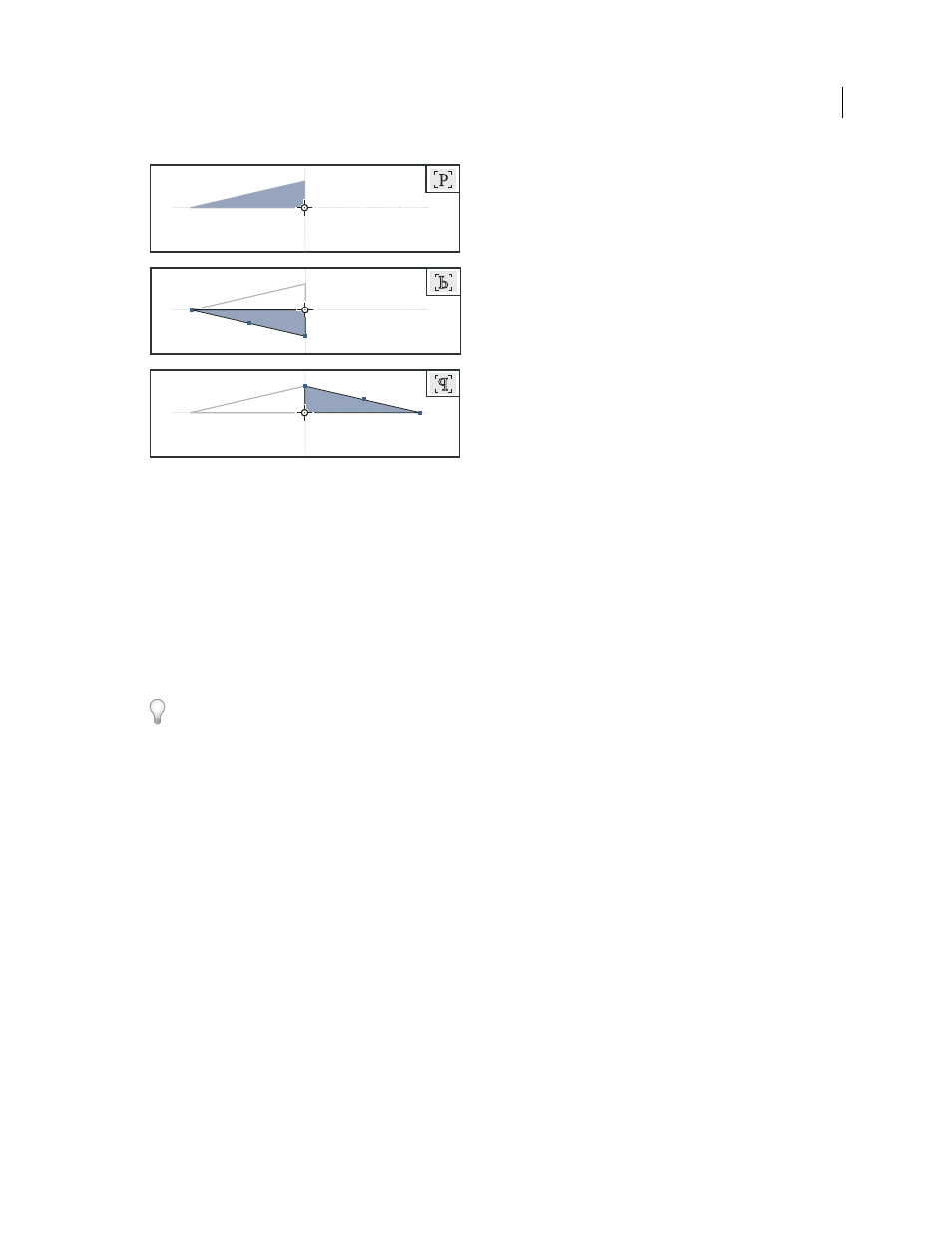Shear (skew) objects, Shear an object – Adobe InDesign CS5 User Manual
Page 428

422
USING INDESIGN
Frames and objects
Last updated 11/16/2011
Original object (top) reflected using Flip Horizontal (middle) and Flip Vertical (bottom)
The flip/rotate indicator (P) in the middle of the Control panel appears white with a black outline if an object is flipped.
If the object is not flipped, the indicator is solid black.
1 Select an object to flip. To flip both the frame and its content, use the Selection tool to select the frame. To flip the
content without its frame, direct-select the object. To flip a frame without its content, direct-select the frame, and
select all the anchor points.
2 Do one of the following:
•
To reflect using the reference point as a horizontal axis, click the Flip Horizontal button in the Control panel.
•
To reflect using the reference point as a vertical axis, click the Flip Vertical button in the Control panel.
You can also reflect objects by using the Selection tool or Free Transform tool to pull one side of an object’s bounding
box past the opposite side, or by typing negative values into the Scale X Percentage or Scale Y Percentage options in
the Transform or Control panel.
Shear (skew) objects
Shearing an object slants or skews it along its horizontal or vertical axis, and can also rotate both of the object’s axes.
Shearing is useful for:
•
Simulating some types of perspective, such as isometric projection.
•
Slanting a text frame.
•
Creating cast shadows when you shear a copy of an object.
More Help topics
Change transformation settings
Shear an object
1 Select an object to shear. To shear both the frame and its content, use the Selection tool to select the frame. To shear
the content without its frame, click the Content Grabber to direct-select the object. To shear a frame without scaling
the content, direct-select the frame, and select all the anchor points.
